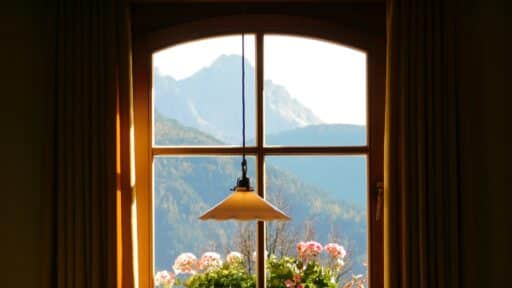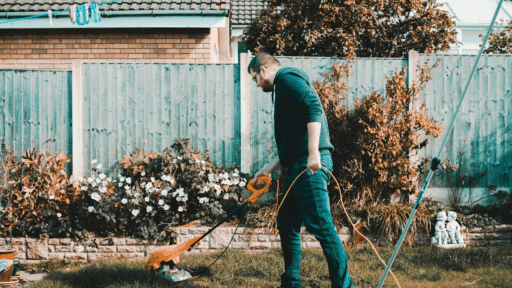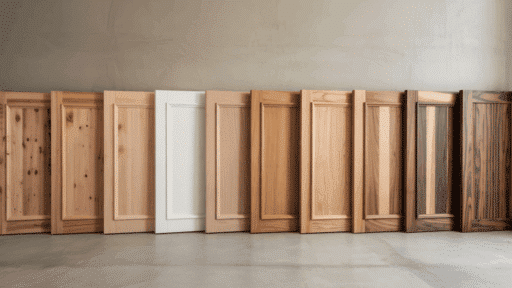Colorado homes take a beating. One week it’s a bluebird day at elevation with intense sun; the next it’s a wet spring snow, chinook winds, or a smoky evening along the Front Range. In a high-altitude, four-season state, your windows and doors aren’t just decorative—they’re the workhorses of comfort, safety, and efficiency. Thoughtful upgrades (and equally thoughtful installation) can tame drafts, stabilize room temperatures, quiet street noise, brighten interiors, and add resilience during wildfire and hail season.
Below is a practical, Colorado-specific roadmap—clean of links and statistics—so you can plan with confidence and talk clearly with any contractor.
Why upgrades are worth it
Windows and exterior doors are often the leakiest parts of a building envelope. When they underperform, you feel it as chilly drafts in winter, hot zones on sunny afternoons, rising utility bills, and condensation around frames. When they perform well, rooms feel even-tempered, quieter, and more comfortable across long daily temperature swings.
Upgrades can also:
- Improve safety and security with stronger glazing, better locks, and sturdier frames.
- Boost curb appeal and natural light.
- Reduce maintenance if you replace failing seals, warped frames, or peeling finishes.
The key is choosing products that match Colorado’s climate and having them installed to modern best practices.
Choosing windows and glass packages for Colorado
1) Start with orientation, not just style.
Think about where each window faces. South-facing glass can help with winter warmth and daylight. West-facing glass can overheat rooms on summer afternoons. North-facing rooms often feel coolest and draftiest. Let those patterns guide your selections rather than buying the same glass package for every opening.
2) Read the labels.
Look for independent performance labels (the ones that report U-factor for insulation and SHGC for solar heat gain). In most of Colorado, the lower the U-factor, the better for winter comfort. For SHGC, south windows can often tolerate a higher value, while west windows usually benefit from lower values or exterior shading.
3) Consider triple-pane where it matters.
Triple-pane units can noticeably improve comfort in bedrooms, over garages, and in rooms facing busy streets. They’re heavier and cost more, so use them strategically if you’re on a budget.
4) Mind frame materials and spacers.
Modern frames—fiberglass, composite, clad wood, and improved vinyl designs—reduce drafts and warping when sized and installed correctly. Warm-edge spacers at the perimeter of insulated glass help reduce condensation at the glass edge.
5) Don’t forget shading and interior finishes.
Overhangs, awnings, exterior screens, and strategic landscaping do a lot of work on west elevations. Inside, choose shades that still allow ventilation so heat doesn’t get trapped against the glass.
High altitude and intense sun: special considerations
Elevation changes everything. Sunlight is more intense, and day-night temperature swings can be dramatic. Here’s how that factors into window choices:
- Low-E coatings help control unwanted heat while cutting fade on flooring and fabrics. Ask your supplier to match the coating to each orientation rather than defaulting to a single spec.
- High-altitude glass builds matter for mountain towns and high passes. Manufacturers offer ways to accommodate pressure differences during shipping and installation. When you order, tell them your home’s approximate elevation so the insulated glass units are built for your location.
- Expansion and contraction can be more extreme, so proper clearances, shims, and sealants are even more important to avoid stress on frames and panes.
Wildfire, hail, and resilience (because…Colorado)
If you live in or near the wildland-urban interface, windows and doors become part of your home’s wildfire defense:
- Favor tempered glass (especially for large lites) and multi-pane assemblies to better withstand radiant heat and flying embers.
- Install ember-resistant screens and eliminate gaps where embers can enter.
- Choose noncombustible or solid-core doors with tight-fitting weatherstripping; if the door includes glass, make it tempered.
- Keep defensible space around openings—no bark mulch or dry vegetation right under windows.
For hail-prone areas, look at impact-resistant glazing or exterior protection options for the most exposed elevations, and make sure installers protect the exterior cladding and flashing details during replacement.
Don’t sleep on doors: quiet, tight, and durable
A tired front door can undermine the best windows. When shopping:
- Check the fit and seal: an adjustable threshold, continuous weatherstripping that actually compresses, and a sweep that meets the sill without dragging.
- If the door has glass, apply the same logic as windows: multi-pane, tempered where appropriate, and a glass package suited to its orientation.
- Hardware matters: multi-point locks improve security and can reduce air leakage by pulling the slab evenly into the seals.
- Frames and sills should be moisture-resistant, well flashed, and thermally broken where possible to reduce cold spots.
Installation: where good products become great (or disappointing)
Even premium windows and doors won’t perform if they’re installed poorly. Colorado’s freeze-thaw cycles and wind-driven rain demand careful water management and air sealing. Insist on the following, and don’t be shy about asking your installer how they’ll do each step:
- Sill protection: Use a pre-formed sill pan or a properly built pan that slopes to the exterior, so any incidental water drains out—not into framing.
- Shingle-style integration: Self-adhered flashing tapes and the wall’s weather-resistive barrier should lap so water always flows outward. Sides overlap the bottom; top overlaps sides.
- Backer rod + sealant: The perimeter joint needs the right-sized backer rod and a high-quality sealant for a flexible, durable air seal.
- Low-expansion foam: Where foam is appropriate, use low-expansion formulas to avoid bowing frames. Seal the interior side for air, manage the exterior side for water.
- Proper shimming and fastening: Frames must be plumb, level, square, and anchored per the manufacturer—not “pulled” into alignment by over-tightening screws.
- Weep paths kept open: No clogging of weep holes or drainage channels.
- Documentation: You should receive product labels, handling instructions, and care/maintenance notes. Keep them.
Common red flags after installation include drafts at the corners, staining under sills, rattling in high winds, and condensation between panes. Address these early; small adjustments go a long way when frames are still settling.
Code, egress, and permitting (what to know, without the jargon)
Colorado is a home-rule state, so cities and counties adopt and amend building codes on their own schedule. Translation: requirements are local. Before you order, call your building department or check their website to confirm:
- Whether a permit is required for window and door replacement.
- Egress rules for sleeping rooms and basements (clear opening size, sill height, and window-well dimensions).
- Any wildfire or high-wind provisions that affect glazing type, screens, or exterior clearances.
- Historic district guidelines if you’re in an older neighborhood.
A quick conversation before you buy avoids design changes after the fact.
Maintenance after the upgrade
Windows and doors are low-maintenance, not no-maintenance. Add these to your seasonal routine:
- Vacuum tracks and clean weeps so drainage works.
- Inspect caulk and sealant annually and touch up where needed.
- Tighten or adjust hardware—hinges, strikes, and multi-point latches can drift slightly during the first year.
- Wash and lubricate weatherstripping per the manufacturer so it seals without sticking.
- Shade management: use exterior shades or interior blinds on hot afternoons to improve comfort and reduce load on cooling systems.
Budgeting and incentives (keep it simple)
Prices vary widely based on frame material, glass package, size, installation complexity, and access (think scaffolding or narrow alleys). If funds are tight, prioritize:
- The worst rooms first—the north bedroom that never gets warm, or the west family room that bakes after lunch.
- Airtight installation—money well spent even on mid-range products.
- Orientation-specific glass—save premium glass for the elevations that need it most.
Federal and local incentives for efficiency upgrades change from time to time. Ask your contractor and utility about current rebates or credits, and keep your product labels and invoices for tax records.
A step-by-step plan you can follow
- Walk the house with a notepad. Mark the rooms with comfort issues, fogged panes, stuck sashes, or obvious drafts.
- Group by orientation. South, west, north, east—note what each group needs.
- Match glass to need. Lower solar-gain glass and/or exterior shading for west; balanced or higher solar-gain for south if winter comfort is a goal; low U-factor everywhere.
- Call out elevation. Tell suppliers your home’s approximate altitude so glass units are built accordingly.
- Plan for resilience. Tempered glass near decks and large openings; ember-resistant screens where vegetation or open space meets the property; solid-core or metal-skinned doors on windward or fire-exposed sides.
- Specify installation details in writing. Sill pans, shingle-style flashing, backer rod, low-expansion foam, air- and water-seal strategy.
- Schedule smart. Shoulder seasons make temporary openings less stressful, but good installers can work year-round.
- Inspect together. Do a walk-through before the crew leaves: open/close every sash, check locks, look at exterior sealant lines, and run water gently over the head flashing to confirm drainage.
- File the paperwork. Keep labels, manuals, finish schedules, and the installer’s warranty.
The bottom line
In Colorado, “good enough” windows and doors rarely are. Our altitude, sun, wind, snow, and wildfire risk ask more of these components than average. Pair climate-appropriate, well-labeled products with rock-solid installation, and you’ll get a quieter, sturdier, more comfortable home that feels good in January, in July, and on the blustery days between. No buzzwords needed—just the right glass in the right places, thoughtful details at the sill and flashing, and a contractor who treats water and air as seriously as you do.








